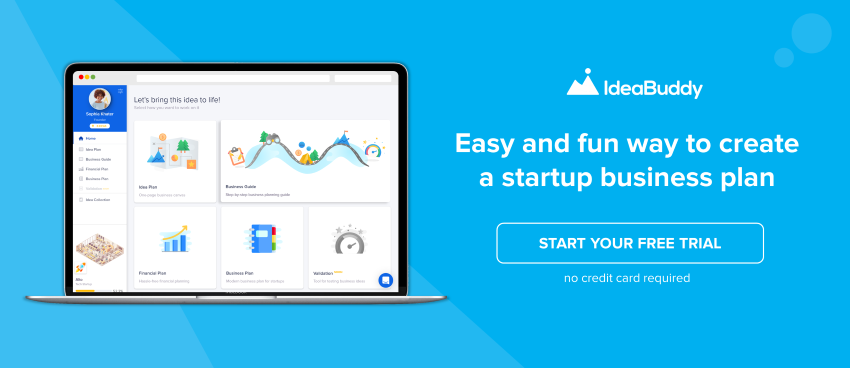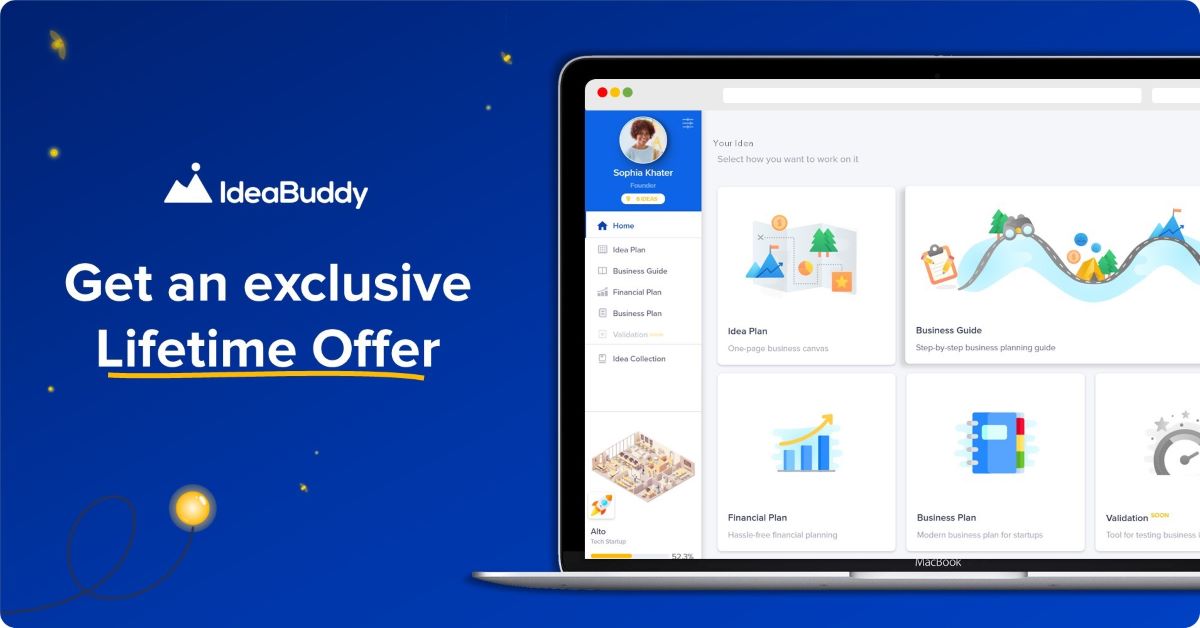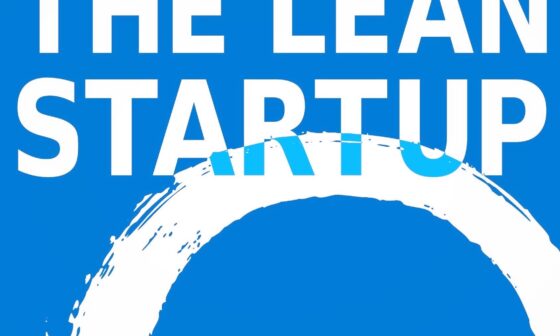Everyone remembers the defining moment they decided to start their own business. Sometimes it’s after months and years of chewing on an idea you just can’t shake off, when you missed yet another family event because of work, or when you’re finally tired of dragging yourself to the office every morning.
Whatever inspired you to start the climb, your first step should always be to make sure your exciting business idea is something people want and will be willing to buy—before you invest all your savings in it. In more official terms, you need to find a product market fit (PMF).
Finding your PMF takes time, patience and determination. But all those hours of research will result in a profitable product that customers are scrambling to get their hands on. So, here’s what you need to know about product market fit and a few practical ways to find it.
What is a product market fit?
A product market fit is when your product satisfies a genuine need among a specific group of customers. In even simpler terms: you find what people really want and then build it for them.
Too many startups crash and burn because they assume everyone will love their product, then only after they’ve spent all their funding, they find people don’t actually want or need what they’re selling.
It’s a tough position to be in, but the good news is that you already know better. (And you’ll know a lot more in a few minutes.)
Whether you have an idea in mind or just want to start a business in a certain market but you’re not sure what product that market needs—you’ll need to find a product market fit. That way, once your business is up and running you can confidently own a sweet spot in the market, have happy customers that spread the word and keep coming back, and run a profitable business that keeps on growing.
How to find your product market fit
Finding your PMF takes time and energy, but as billionaire entrepreneur Mark Cuban says: “the one thing in life you can control is your effort.” So, let’s channel that precious effort into the right activities. Here’s what you need to do:
Find a target audience
Start by asking yourself: who will benefit from my product?
These are the people who will fall in love with your product because it solves a real problem for them. For example, Uber’s audience is people in busy cities who have trouble finding convenient transport when they need it. So when Uber built an app to order a car 24/7 at the tap of a button, those very people flocked to it (and continue to be their biggest fans today).
Start by choosing the market you want to operate in (e.g. cheese), then zoom in on a niche that needs help (e.g. vegan cheese). Then it’s time to roll up your sleeves and do some research. Start by digging into Facebook groups, forums, and other social feeds to see what people are saying. Take note of who they are, what they do, their biggest challenges, and what they want to achieve. These are your “buyer personas,” and everything you do from now on should revolve around them.
Identify a problem no other product solves
At this point, you already have a better understanding of your customer’s needs and can use them to identify a killer market opportunity. Now it’s time to target the biggest pain point that users are desperate to solve (ideally with your product).
During your online hunts and interviews, you’ll notice the same complaints popping up over and over again. It could be anything from a much-needed product feature to an entire solution that doesn’t exist yet. Whatever it is, take note and circle the biggest one. Look at that! You now have the foundation for your business idea.
Define your product’s unique value
What can you offer that your competitors can’t? In other words: what is your unique selling proposition?
This is notoriously tricky to find, but a good place to start is by asking your target audience what similar solutions they’ve tried before and why those failed. You can also trawl through your competitor’s features to find what they have in common, and what you can offer that’s different.
The key here is to highlight something short and sweet that makes your product a must-try, like “waterproof hiking gear for dogs” or “gentle teas for anxious people.”
Of course, brilliant ideas can take a while to come by. If you find yourself stuck in a mental rut, here’s a tip from Steve Jobs: take a walk while you brainstorm. Some of his most famous products were born during his leisurely strolls, plus studies show walking can increase creative output by 60%. Worth a shot, right?
Develop a Minimal Viable Product (MVP)
Ever heard the proverb: If you wish to move mountains tomorrow, you must start by lifting stones today…? Well, the MVP is your first stone.
A minimal viable product is a basic prototype of your idea so customers (and stakeholders) can understand what it looks like and how it works. It essentially lets you test your idea before spilling money into building the real thing.
A word of caution: resist the temptation to bulk your MVP with tons of features; it’s just an appetizer, not the main course. It only has to work. The secret is to include the absolute minimum features of your product that will delight customers while showcasing its unique value to investors.
Test with real users and optimize
Now that you have your MVP, it’s time to test it with real users through focus groups, surveys, and one-on-one interviews. Testing is the best way to get the feedback you need to shape your final product. It also helps if you use your product yourself to see things from your customer’s perspective.
When Sara Blakely began transforming the shapewear industry, she made sure to test her products with real women. She asked her mom, her friends, and even her grandmother to wear her designs and share their thoughts. Her efforts clearly paid off considering her company, SPANX, earned $4 million in its first year.
The point is: you won’t know what’s broken until you test it. So test, test, test!
Go back to the drawing board and try a different angle, target a different audience, or even change your product. Plenty of big-shot companies have pivoted several times before striking gold. Take Odeo, for example. Odeo was a podcast subscription service that was soon lost to iTunes, but instead of giving up, they pivoted and became what we now know as Twitter.
So you see? Success isn’t always getting it right from the start. It’s simply deciding not to give up.
Product market fit checklist
Now that you’ve gone through the steps and have a shining MVP or finished product ready to go, it’s always wise to double-check you’re going in the right direction. Here’s a quick checklist to help you know if you’ve found a good product market fit.
- It passes the 40% rule. During your first test runs and even after the product has launched, if at least 40% of your users are happy with it and couldn’t live without it, then you have a winner. You can find this out by talking to your customers or stalking online reviews.
- The timing is right. It’s important to ensure the market is ready to embrace your product. Bill Gates learned this the hard way when he unveiled the first touchscreen tablet back in 2002. The public wasn’t quite ready for tablets, so it never took off. Years later when the mobile revolution was in full swing, Steve Jobs presented the iPad—and the rest is history. So yes, timing is everything.
- People spread the word. You know you’ve hit the jackpot when you create a product that people voluntarily recommend to their friends. If this isn’t happening, then it’s time to review why.
- Key metrics are promising. Data is a solid way to know if you’ve found your unicorn. Set a Key Performance Indicator (KPI) and monitor it closely. It can be your number of sales, how many visitors stay on your website, how many returning customers you have, etc.
Of course, these are just some of the ways you’ll know you have a killer product market fit. Honestly, if you find yourself having to hire new people to cope with the demand, you can be more than certain that you’ve made it!
Examples of successful product market fit
What better way to get inspired than to see how others have succeeded. You probably already have a mental archive of admirable companies with unforgettable products, but here are a few more examples to show you how the smallest gap in the market can turn huge profits—if you know where to look.
Spotify
Opportunity: Napster died due to music copyright issues, but before it did, it proved that there was an audience for this type of music streaming service.
Solution: Spotify came up with a nifty platform for music streaming, and bet that people were willing to pay a small fee to “own” the music. They were right, and now Spotify has over 270 million users! Since then, they have been adding valuable features like personalized playlists and offline playback. You can bet they found these were popular features through—you guessed it—testing.
HelloFresh
Opportunity: People wanted to eat healthier but didn’t know what to cook or where to get the right ingredients.
Solution: HelloFresh, like many others, came up with the idea of weekly subscription food boxes that ship the exact ingredients you need to cook a healthy meal, along with step-by-step instructions. This concept proved so popular that there are now countless other subscription services for things like beauty boxes, personalized clothing, and even monthly toys for your cat!
SPANX
Opportunity: Most women found current shapewear uncomfortable or ineffective at smoothing their figure under their clothes since it was mostly designed by people who didn’t use shapewear themselves.
Solution: Sara Blakely—with only $5,000 to her name—organically promoted a “footless pantyhose” that answered all the biggest complaints; it was light, comfortable, and didn’t roll up underneath their clothing. It was a match made in heaven, now her company is now worth over 1 billion dollars.
Her best advice? “Don’t be intimidated by what you don’t know. That can be your greatest strength and ensure that you do things differently from everyone else.”
So if you have an inkling of an idea or think you know where to find one, chase it, and don’t stop digging until you strike gold.
. . .
Ready to find your product market fit?
It may seem like a lot to find your product market fit, but if you take anything from this post, it should be that every successful entrepreneur in our examples was once in your shoes. Nobody got it right the first time, they just kept going until they did.
Wherever you are in your process, you’ll need to get your ideas on paper—well, on screen. This can get tricky when you’re not sure where to start, so we’ve made it simple for you.
Meet IdeaBuddy, a handy business planning software that guides hopeful entrepreneurs like yourself every step of the way. It’ll show you what to write, where to write it, and how to make it better. Then, it’ll take your idea and generate an investor-ready business plan. It’s pretty simple, really.
Ready to get your business started? Sign up for a free account here.






